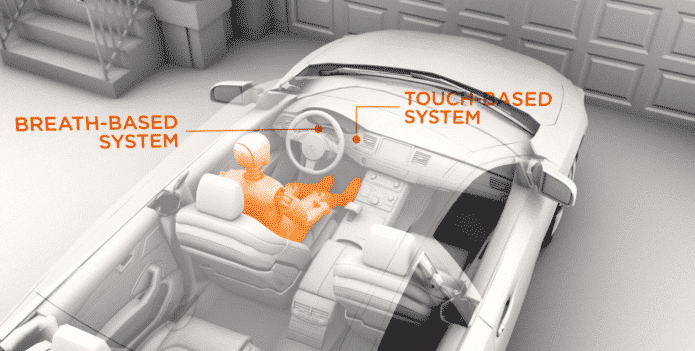NHTSA unveils new anti-drunk driving technology to prevent cars from being driven by sloshed drivers
The National Highway Traffic Safety Administration’s uncovered a first-ever prototype vehicle with an advanced alcohol detection technology that could ultimately prevent vehicles from being operated by a drunken driver.
At a recent event, in front of hundreds of members of Mothers Against Drunk Driving at the agency’s headquarters, NHTSA Administrator Mark Rosekind showcased the prototype of two candidates for the Driver Alcohol Detection System for Safety (DADSS) tech that it has been developing since 2008.
“There is still a great deal of work to do, but support from Congress and the industry has helped us achieve key research and development milestones,” Rosekind said. “DADSS has enormous potential to prevent drunk driving in specific populations such as teen drivers and commercial fleets, and making it an option available to vehicle owners would provide a powerful new tool in the battle against drunk driving deaths.”
Rosekind said the agency has no plans to start a process to make the devices compulsory on all vehicles. He said to start he hopes that the technology could be tested in a commercial or government fleet in a few years. He is of the belief that once it is proven parents and others will accept it.
According to Rosekind, People will think “how did we ever drive without it.” In a few years, the system needs to be foolproof for the public to accept it. “No one is going tolerate anything less than that.”
DADSS is a non-intrusive system targeted at finding out when a driver is above the legal alcohol limit. One is an low-key breathalyzer put on either on the driver-side door or on the steering wheel that can “smell” your breath, even if you don’t bend in closely. The other is a touch sensor fixed in an ignition button or a gear shift that checks your finger for your Blood Alcohol Content (BAC). Both car add-ons can find out whether your BAC is beyond the legal limit of 0.08, and both of them are created to keep you from taking the car anywhere if that’s the case.
A restaurant trade association, The American Beverage Institute that represented over 8,000 restaurants obstructs the DADSS program. They also strongly opposed attempts by the National Transportation Safety Board to persuade states to lower the maximum blood alcohol level from .08 to .05, which is unsuccessful so far.
Managing Director Sarah Longwell told The Detroit News that it “will simply stop many responsible social drinkers who have a glass of wine with dinner from starting their cars,” since BAC rises as alcohol gets absorbed into your bloodstream.
He also said that “‘Voluntary’ passive alcohol sensors like DADSS will do nothing to keep these dangerous drivers off our roads. Instead, DADSS will simply stop many responsible social drinkers who have a glass of wine with dinner from starting their cars.”
To be clear, the agency will not need automakers some of which are working on their own anti-drunk driving tech to install the system when it is ready. NHTSA head, Mark Rosekind only desires that in a few years after it gets tested on government vehicles, people would find it useful or even necessary. However, that take a while though, as the agency believes that the research and development of the final product could take five to eight years more.
Source: Detroit News

